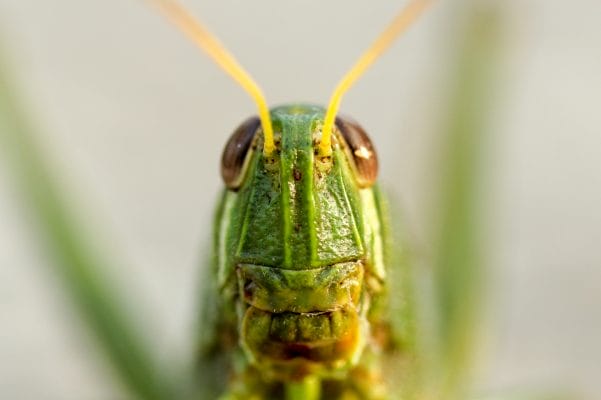The consumption of animals has long met the ire of both environmental and climate scientists. Meat production alone is responsible for roughly 40% more greenhouse emissions than all global transportation systems combined. Additionally, an estimated 30% of the planet’s land surface is used to feed animals we will eventually eat. With the global human population expected to hit nine billion by 2050, current levels of land allocated for agriculture will be unable to supply enough food to feed everyone.
Countless scientific minds are actively researching solutions to this looming problem. But what if part of the fix already existed, and indeed was being used by two billion people? According to the Food and Agriculture Organization of the United Nations, edible insects could be used as a potential replacement to what we view as traditional animal protein sources. They’re lower cost to produce–crickets, for example, require only two kilograms of feed to create one kilogram of edible biomass. This is compared to the over 5 kilograms of feed required to produce one kilogram of edible beef. Insects also result in a fraction of the greenhouse gases or ammonia emitted in traditional animal production. The UN report concludes that cutting global consumption of animal protein by eating more insects (or imitation meats) would free up an area of land roughly ten times the size of Alaska. An eager contingency of startups is trying to enable this diet shift by turning crickets into cocktail bitters and protein powder, and fruit fly larvae into hamburgers and cooking oil.
Despite the potential benefits of insects an environmentally-friendly protein source, most people in the United States refuse to enjoy a salad topped with fried crickets or ice cream sprinkled with ants. Why do Americans have such an aversion to insects and what can we do to overcome this? Behavioral science research suggests that a number of psychological factors may be contributing to our cultural resistance to adopting insects as an alternative. In general, Americans have rigid conceptions of which edible plants and animals are acceptable as “food.” There is a collective understanding that certain animals are to be eaten (cows, pigs, chickens, etc.), certain animals are to be loved (dogs, cats, etc.), and others are to be feared or disgusted (snakes, insects, raccoons, etc.). While in some cases these preferences may be rooted in evolutionary processes, the widespread adoption of insects as food in other countries suggests that Western biases against insect consumption are strictly cultural and behavioral.
In most American communities, we have been primed to be fearful or repulsed by insects, so when adults are prompted to eat insects they have reactive, emotional responses, and reject the opportunity without questioning their choice. This type of affective decision making may be preventing well-intentioned eaters from exploring this legitimate, sustainable protein source.
So how can we help Americans make more intentional decisions around eating insects? To start, we can better understand the multitude of psychological drivers at play. It’s likely that Americans are underestimating how many millions of humans already consume insect-based foods. When we fail to associate insects with their delicious potential as snacks, we are likely associating them with bugs that create the ick factor–cockroaches in our apartment, mosquitoes relentlessly buzzing in our ear, or the deadly spiders we saw on Planet Earth.
The importance of unpacking the psychological contributors to this irrational avoidance of insect consumption will only become more critical as Americans increasingly search for more sustainable food options. From there, we can begin to develop behavioral solutions to help people reframe how they approach decisions to consume insect-based foods.
We’re committed to exploring how we interact with our food systems through a behavioral lens, both in the United States and abroad. We’re currently focused on providing solutions to tough problems like food waste, land systems, and the search for sustainable alternative food sources. What food topics are you interested in exploring? Let us know via @ideas42, and in the meantime feel free to try our favorite recipe for Chocolate Chirp Cookies.



